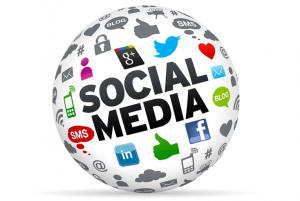by Scott Howard | Jan 31, 2017 | Marketing and Advertising Insights, ScLoHo Sales Tips, The Not-So-Secret Writings of ScLoHo
In my world of marketing and advertising, I see all kinds of schemes designed to get people to buy stuff. Sometimes I get unsolicited emails from people who think I want to buy their stuff, but they are paddling up stream and up the wrong creek.
I’m going to show you an example from last week.
I’ve been getting emails from Matt, well okay, I’ll use his real name and show you the exact content.
The subject line was:
First impressions are overrated
That was good. Here’s what the body of the email said:
Scott,
Something must’ve been wrong with my initial outreach to you because I still haven’t heard back. I think it’s time for a fresh start.
Hi, I’m Matt, a Founder at CONSENSUS™. Our software powers personalized, interactive, video demos to drive ridiculous revenue and I think it’s a great fit for you.
Don’t take my word for it, see for yourself.
I clicked on the Watch Demo Button and started down a rabbit trail to see how bad this would be. It was an interactive video and I realized it wasn’t going to get any better than my first impression.
Here’s how he wrapped up the email to me:
We can show you how we’ve helped companies 2x their close rate in a 30 minute meeting. Are you available sometime early next week?
Here’s what I wrote back to Matt:
You have not created a valid business reason for me to respond. As such, I am very unimpressed with what your service could provide.
Unless you can create a personalized V.B.R. your success in email prospecting is limited.
I am not the person who can say yes and with this experience I am the person who can say no to recommending your services for our company and the clients I serve.
Get better, be better.
Good luck.
Let this be a warning to you if you send me an email like his, you may be the subject of an article like this.
I decided to use his email as a lesson.
A lesson for him, for you and for me.
I spent the time to respond and share a lesson with him.
Sharing this online right here is a lesson for you.
And all of this is a reminder lesson for me not to get lazy.
But really, there is a Better Way of Getting Customers than what this guy did.
If you want some ideas for your business, contact me and I promise not to send you a form letter.
by Scott Howard | Jan 23, 2017 | Marketing and Advertising Insights, The Not-So-Secret Writings of ScLoHo, WOWO Fort Wayne Radio Advertising with Scott Howard
Three questions that apply to everyone and nearly everything:
Do you set goals?
Do you set up a plan to meet those goals?
Do you meet or exceed those goals? 
You can ask those same questions to a high school freshman, a college freshman, or a 50 year old and you will be able to determine the level of success they will achieve.
Everyone has goals, even if they don’t consider them goals. Each one of us has a goal of waking up, eating a couple of meals and going to sleep at the end of our day. But those goals can also be considered habits.
To really make some positive changes and improvements, setting goals is truly a first step. Not the only step, but you have to have a goal first.
Let’s jump into the business world since that’s my focus and sharpen that focus to advertising and marketing.
The goal oriented question I have for you is:
Do You Have A Marketing Measuring Stick?
Last year I launched several advertising and marketing programs for new advertising partners and some were more successful than others.
Not because some produced greater measurable results.
The real reason some were more successful than others has to do with setting goals and measuring the performance.
Some businesses were kind of fuzzy on their goals and so it was hard to determine if or when they met their goals.
Some businesses set goals but never fully put in place a method to track or measure the results.
Other businesses had unrealistic expectations and were not open to learning how to properly align their goals and expectations with the actions required.
On the flip side, I got to work with several advertising partners that were wildly successful and will likely be lifelong advertising partners.
What’s the difference?
It comes back to: Do You Have A Marketing Measuring Stick?
If you don’t then you are having to rely on assumptions and feelings which is a dangerous way to live your life and a business.
Let me tell you about the advertising partners that quit last year but shouldn’t have.
The first one was a dentist who I had worked with a few years ago and helped them build their practice from scratch. Then they cut expenses for awhile because they were expanding by buying another practice and wanted to show the bankers a more favorable cash flow.
Two years later, I meet with them again, but instead of meeting with the doctor and his wife whom I had worked with the first time, my meetings are with a staff person who has been assigned to handle his marketing. I give her credit. She is smart. But she also needs some guidance and mentoring to help them make smart marketing decisions.
Instead, this dentist office didn’t follow my recommendations to track response. Without this critical information, all they can do is go with feelings since they don’t have any data. In my final meeting with them, they said, yes, they did get an increase in the types of patients that we were advertising for on the radio. But no, they didn’t keep track and so it’s a wild guess as to how profitable they were.
The real problem with this dental practice is they cannot justify ANYTHING they are spending money on to bring in new patients, because they have no measuring stick or record keeping. I really feel worse for them than me because they are blindly spending money without any accountability. And unfortunately this is the way the majority of businesses make advertising decisions.
Ironically the other advertising partner was also a dentist and a competitor to the first dentist. Their offices were about two miles apart. With dentist #2, we had a measuring stick because our entire campaign was digital with no radio ads. The measuring stick I used was the reporting I got every month. The digital ads were responsible for 80% of the new visitors to their website. That’s more successful than any other digital campaign I have run!
So why did they quit? They went in with a short sighted mentality. They initially decided to give it a shot. I told them what our minimum time commitment was and they were reluctant but did it anyway. And despite evidence that we were building their practice, they decided to use a different measuring stick. They decided to stick with a budget no matter what the results were. I had a gut feeling about both of these dentists from the beginning, and I was right.
One more doctor story. This time a chiropractor with two offices. This doctor and I worked together starting last summer and just recently I tweaked his campaign. We were in agreement with how to measure and what to measure. 2017 is going to be a fantastic year for the chiropractor.
The dentists I worked with, I am going to use the information I did gather and find another dentist that can work hand in hand with me (including the “measuring stick” or tracking) and help them grow.
Do you have a marketing measuring stick? Do you know what to measure and how to measure it? Do you want help?
by Scott Howard | Jan 17, 2017 | Marketing and Advertising Insights, ScLoHo's Collective Wisdom, ScLoHo's Web World, The Not-So-Secret Writings of ScLoHo
Years ago, a friend of mine named Anthony gave a presentation on the power of Word of Mouth via Facebook.
It opened a lot of eyes.
Businesses that were looking to advertise and get more customers started to rethink the way they were doing things with traditional advertising methods like radio, television, newspapers and magazines, even phone books and billboards .
It also frightened some in the advertising world, thinking that they were about to lose their jobs if traditional advertising was going to disappear in favor of Social Media.
Fast forward a dozen years or so and social media is not new media anymore, it’s a standard marketing option that many have grown up with. Yet there are still some unanswered questions pertaining to How Does Social Media Fit in Marketing Your Business? 
Before I answer, my own credentials: over 20 years working in traditional media including primarily radio but also print and online. I served on the local American Advertising Federation Board and got to know the strengths of nearly any media along with their vulnerabilities. I also worked full time in website development and ran the social media marketing for a $50 million international e-Commerce company.
So I’ve seen a bunch and experienced a bunch.
The example that Anthony shared years ago was a friend asking on her Facebook page for recommendations for a new dentist. She had a couple dozen Facebook friends chime in with recommendations and a few warnings about dentists that they did not like.
There was nothing special about this except it was now happening online instead of in person. Social Media simply gave anyone with access to the internet the ability to engage in two way communication online instead of just over the phone or in person. Word of Mouth now had an additional platform.
Businesses wanted to figure out how to reach people looking for them on social media and although it has evolved over the years, advertising on sites like Facebook have been around for quite some time.
Facebook continues to change the algorithms that determine what you and I see when we are looking at our newsfeed. They made a big change when I was working fulltime in Social Media that shrunk the number of people reached organically with our posts by 75%. Why did Facebook do this? To make money. Piles and piles of money.
I quickly discovered that I could reach even more people on Facebook by paying for the post to be boosted and it worked. Facebook continues to refine the advertising options and there will never be an ideal formula… count on the changes to continue forever.
But while there is a distinct difference in organic Word Of Mouth marketing and Advertising of sites like Facebook, consumers don’t usually grasp the differences.
MarketingCharts.com released a study with statistics showing that 40% of people have bought something they saw on social media. It also said 2/3rd of adults use social media every week. What they cannot measure is the true power of a particular trigger factor that prompted an individual to spend money. That has always been the case, even before the internet.
Now I sometimes will use the tools that I have to show my advertising partners what we can measure online, but I always use the disclaimer that the numbers are only part of the story.
Should you and your business use social media to market your business?
My answer is nearly always yes.
Why? It’s because that is where your customers are.
Should you only use social media?
Probably not, it is limiting just like any other marketing you are thinking of.
But please don’t just act on these blanket statements as the gospel for how to successfully market your business.
You need an individual assessment, and that’s where I come in.
Contact me for details.
by Scott Howard | Jan 9, 2017 | Marketing and Advertising Insights, ScLoHo's Collective Wisdom
A couple of tidbits of information that applies to the listeners of my radio station, WOWO, in Fort Wayne, Indiana.
For the past 20 years WOWO has been a news/talk radio station, (out of 90+ years on the air.)
Last month we received results from the rating service we subscribe to and again WOWO dominates with one of the largest audiences in our city. Even more impressive was the number of adults who listen.
I like to call them grown ups because once you reach a certain age you start doing grown up things like buy a house, start having kids, and buying important stuff. There’s lot’s of important stuff to buy once you are a grown up.
One tidbit of information has to do with the format of WOWO, News/Talk. 2016 was a huge year for political news with the election, and now as we move through the first couple of years of the Trump adminstration, there is no slowing down in sight. Nationally the News/Talk radio format was the most listened to in 2016 and the experts predict it will continue.
While it’s nice to have some industry insiders proclaim that, I knew that and you probably did too if you gave it a couple moments thought.
The other tidbit of information I have gathered merges two sources. When I dig into the radio rating information specifically for WOWO, I continue to see a huge number of listeners who are around the Baby Boomer generation.
To give you an idea of what Baby Boomers look like: Michelle Obama is a “young” Boomer, born in 1964 and Hillary Clinton at age 69 is at the other end of the Boomer generation.
Mediapost published this insight on Boomers which applies to most WOWO radio listeners:
What We’ve Learned About Marketing To Baby Boomers by Jim Gilmartin
Our Understanding of the Baby Boomer Consumer
Mark Twain wrote, “The problem isn’t the things that we don’t know; it’s the things we ‘know’ that ain’t so.” His comment is simply a reflection of a common-sense reality. Today, marketing and selling draw on a lot of things “we ‘know’ that ain’t so.”
For instance: Marketers once “knew” (and many still do) that people 50 and older rarely change brands. Everybody “knew” that once consumers settled in on a brand or a company, they became more resistant to switching to another brand or business as they got older. Research shows that to be wrong. We also learned that consumer behavior is pertinent to the subtleties of marketing, advertising, and sales practices. Here is some of what we’ve learned.
1. As we age, our individualism increases
Baby Boomers are less subject to peer influence than are younger consumers.
Marketing Implication: Keeping up with the Joneses is not as important as it once was; thus, advertising that invokes social status benefits does not play as well in Baby Boomer markets as it does in younger ones. Largely freed from worrying about reactions of others, Baby Boomers tend toward greater practicality in buying decisions than younger consumers.
2. We develop an Increased demand for facts
Baby Boomers tend to be less responsive to sweeping claims in marketing messages as they age.
Marketing Implication: Hyperbole turns them off. If Baby Boomers are interested in considering a purchase, they want unadorned facts. Years of buying equip them with knowledge of what to look for and what information they need for an intelligent purchase. However, they often don’t get to the point of asking for facts until a product has emotionally intrigued them.
3. Our response to emotional stimuli increases
Baby Boomers tend to be quicker than younger consumers to reflect a lack of interest in or negative reaction to an offered product that doesn’t make an emotional connection.
Marketing Implication: Such “first impressions” are more likely to be permanent than among younger people, who are more apt to give a marketer a second chance. On the other hand, you can embed a positive first impression especially deep in the emotions of the Baby Boomer — so much so that he or she is often more disposed to be a loyal customer than the younger consumer.
4. We become less self-oriented, more altruistic
Baby Boomers tend to show increased response to marketing appeals reflecting altruistic values.
Marketing Implication: This tracks with shared middle-age shifts toward stronger spiritual values in which concern for others increases. As their altruistic motivations grow and become more powerful, narcissistic and materialistic values wane in influence. Marketers to Baby Boomers must rethink their traditional egocentric appeals in marketing communications.
5. As we age, we spend more time in making purchase decisions
People experience changes in their perceptions of time, and also the meaning and role of time in their lives as they grow older.
Marketing Implication: For example, Baby Boomers often ignore time-urgency strategies in marketing — such as: “Offer good until —,” “Only three left in stock.” Generally, “time is not of the essence” is a common attitude among Baby Boomers, especially those who have retired.
6. We often project what seems to be contradictory behavior
Sometimes we characterize Baby Boomers as selfish and selfless, penurious and profligate, spontaneous and deliberate, and so on. These different attributes lead some to describe Baby Boomers as contradictory — or at least, confusing in their behavior.
Marketing Implication: Baby Boomers are not different in their conduct; they are sensitive to the context in their behavior. For example, a Baby Boomer may use coupons in a grocery store, after which she drives off in a Mercedes.
This activity is not evidence of conflicting behavior, but an example of the rules of thriftiness applied to basics, and the rules of full value applied to discretionary expenditures. In the first case, the price is the common denominator in consumers’ interest, in the second, there is no common denominator because each person calculates the whole value in a unique manner.
Want to know more? Let’s talk.
by Scott Howard | Jan 5, 2017 | Marketing and Advertising Insights, ScLoHo's Collective Wisdom, ScLoHo's Web World
The other day I shared an article that urged you to consider how customer focused you and your business are.
Today, a deeper dig into some specifics. 
This great insight from Laurie Petersen arrived in my inbox from Mediapost this week about improvements each of us need to make to create a more friendly customer relationship online:
Customer Experience Wish List For 2017 by Laurie Petersen
Out with the old, in with the new. With the spirit of encouraging positive change, we crowd-sourced this list of 10 customer-experience annoyances everyone wishes would go away.
1. Disconnected customer service systems that require you to enter the same information again and again and again each time you switch to a new department.
2. Captchas that are so obtuse it takes five times to get it right.
3. Mobile and web sites that don’t talk to each other or remember your information, even when you ask them to.
4. Retargeted advertising that keeps selling you after you’ve already been sold.
5. Robo-callers that tell you what you already know.
6. Shopping sites that require entering convoluted discount codes.
7. Deceptive pricing.
8. Communications that don’t discern where you are in the purchase cycle.
9. Employees who lack the training and knowledge to answer basic questions.
10. Websites that offer no way to ever connect with a human for a voice conversation.
What’s missing from the list?
This list is a great start, Laurie and there are others answering her question at the Mediapost page where this was originally posted.
When I first scan the list, number 4 really caught my attention.
4. Retargeted advertising that keeps selling you after you’ve already been sold.
One of the marketing solutions I offer involves a more sophisticated method of retargeting than I’ve seen anywhere else and it has built in to the solution a trigger that helps solve this issue.
Contact me if you want details.





